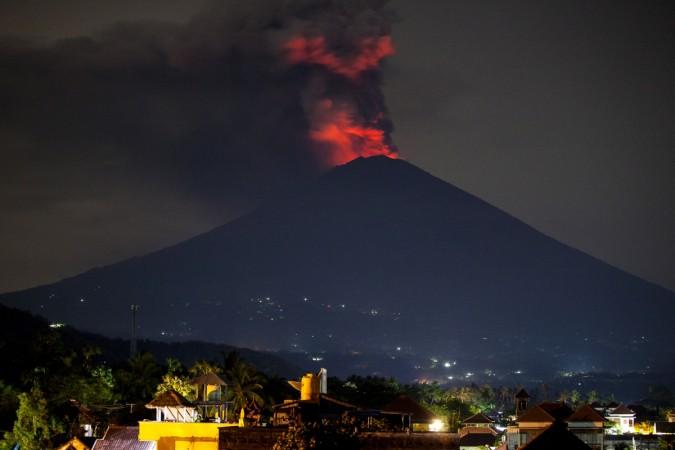As the Mount Agung volcano in Bali, Indonesia, shows heightened activity spewing ash and releasing massive amounts of smoke that can be seen billowing 9,800 feet above its cone, residents in the island are on alert and airports remain closed for the third day.
The closure has led to hundreds of tourists being stranded on the island and Indonesian authorities are now deploying buses to help these tourists.

The volcano is now said to be moving to the magmatic phase and explosive eruptions have been taking place, which have reportedly been heard even 12 kilometres away. A spokesman for Indonesia's Disaster Mitigation Agency explained that lava has been accumulating on the crater of the volcano and will soon start spilling over on the slopes.
While a large eruption on Mount Agung seems imminent, experts also believe that the current rate of ash and smoke could continue for a few weeks. When the volcano erupts, Bali could see quite an impact but the rest of the world will not be spared either. The activity is likely to affect the global climate as a large amount of ash and gases will be released into the atmosphere, reported Vox.
However, the eruption may also end up cooling the planet as the ash particles and sulphur dioxide that is released into the air forms compounds that reflect the sunlight and bring down the temperature, the USGS explained. On the flipside, volcanic carbon dioxide, a greenhouse gas, could lead to higher global warming. The cooling effect depends on how large the eruption is and the amount of sulphur dioxide released into the stratosphere.
This has been noted from past eruptions, which have decreased the average temperature on the Earth surface by about half a degree (Fahrenheit). The eruption of Mount Pinatubo in the Philippines on June 15, 1991, is said to have cooled the Earth's surface by as much as 1.3 degrees Fahrenheit for about three years.

Similarly, the 1783-1784 Laki fissure eruption in Iceland released a large amount of sulphur dioxide, and the two eruptions brought down temperatures in North America and Europe.
It now remains to be seen if the Mount Agung's eruption will have a similar effect on the global climate.
Meanwhile, Indonesian authorities have sounded the highest level of alert and over 100,000 people have now been asked to leave their homes behind and move to areas that are further away from the rumbling volcano. But evacuation is turning out to be quite a challenge for authorities as many residents have refused to leave. Speaking about why these residents are being adamant, National Disaster Management Agency spokesperson Sutopo Purwo Nugroho told Express UK: "They feel safe because the area was not damaged during the 1963 eruption. They will evacuate if it is dangerous."
The last time that the Mount Agung volcano exploded was in the year 1963. The residents of the island heard explosions and rumbles in February and Agung erupted a month later, killing over 2,000 people and devastating several villages.
















